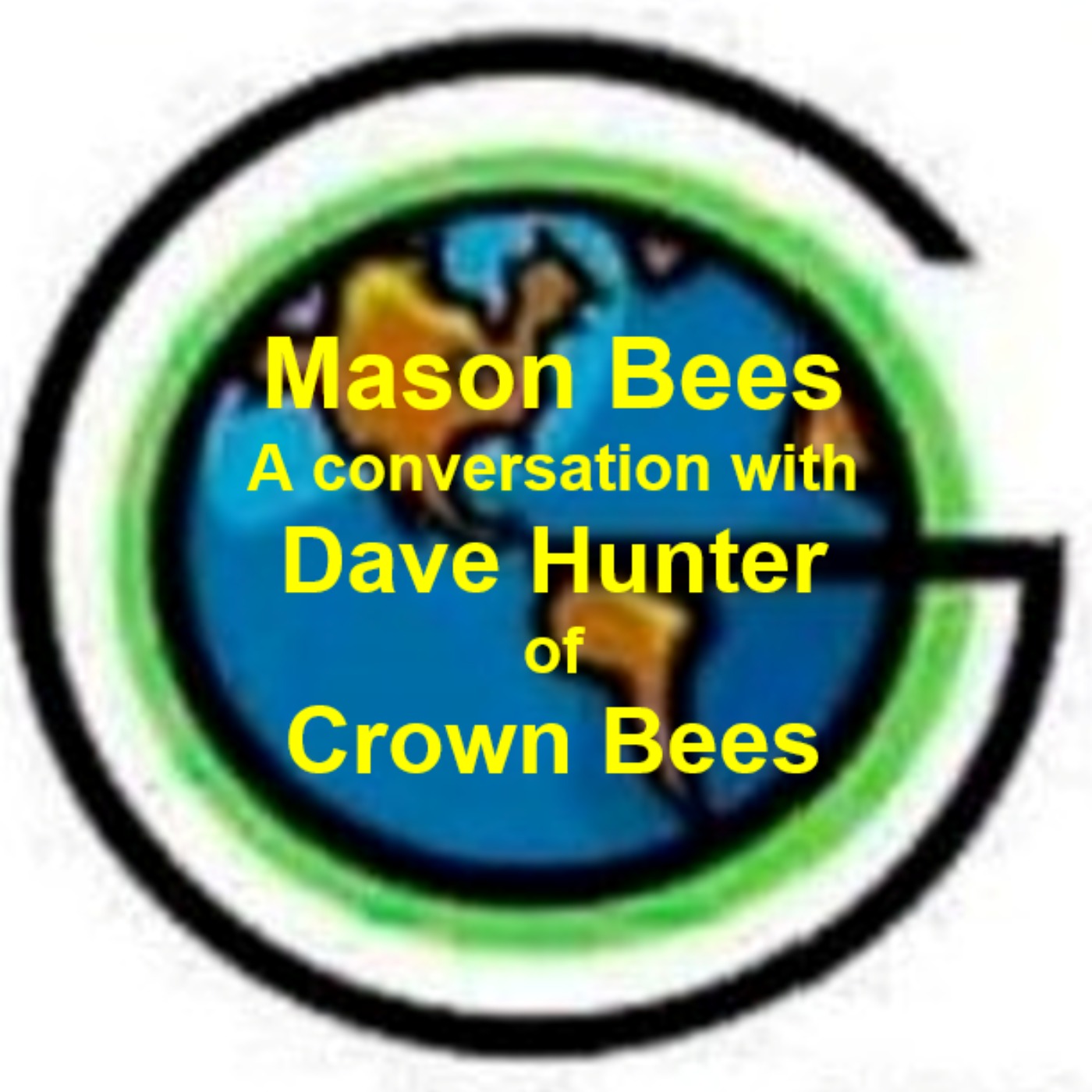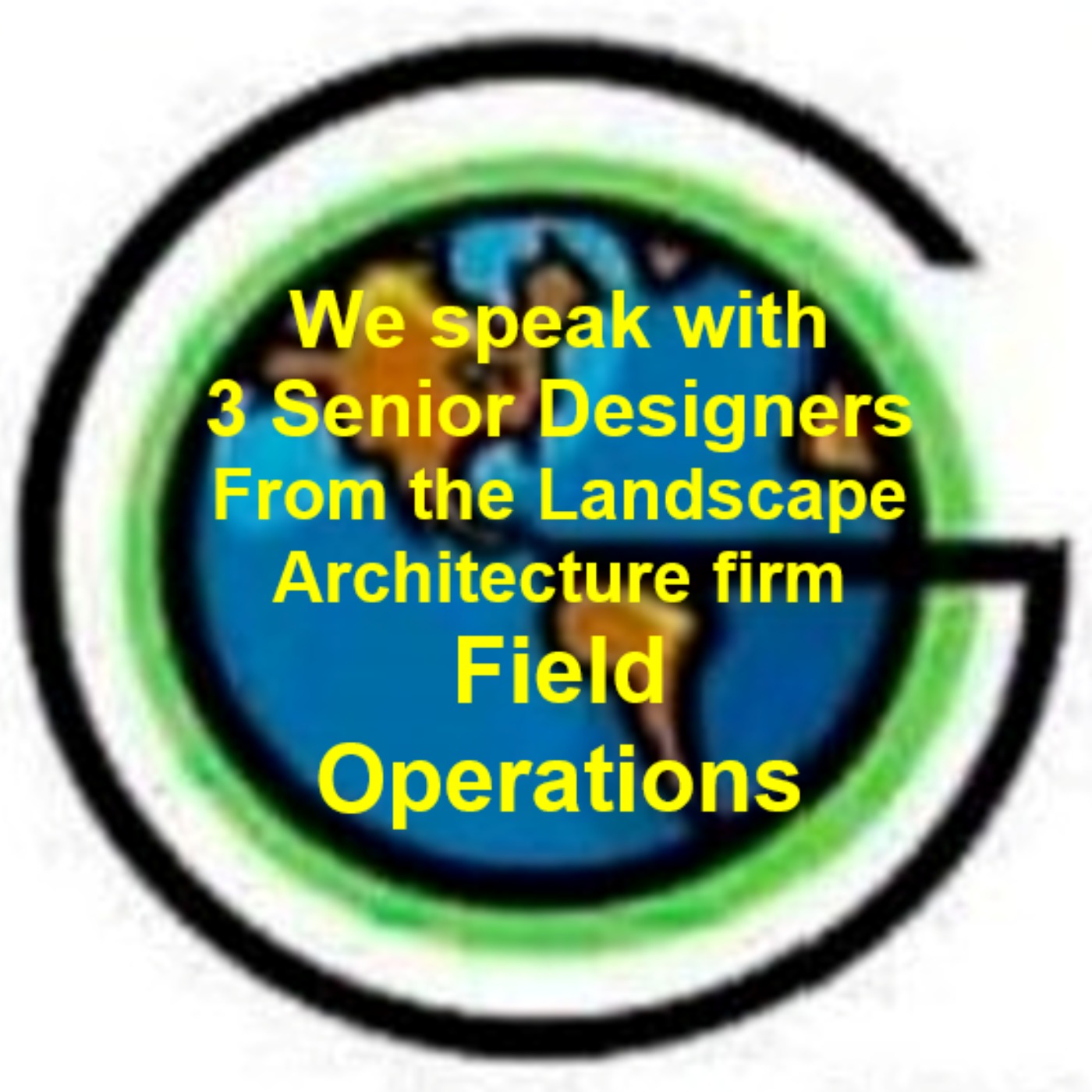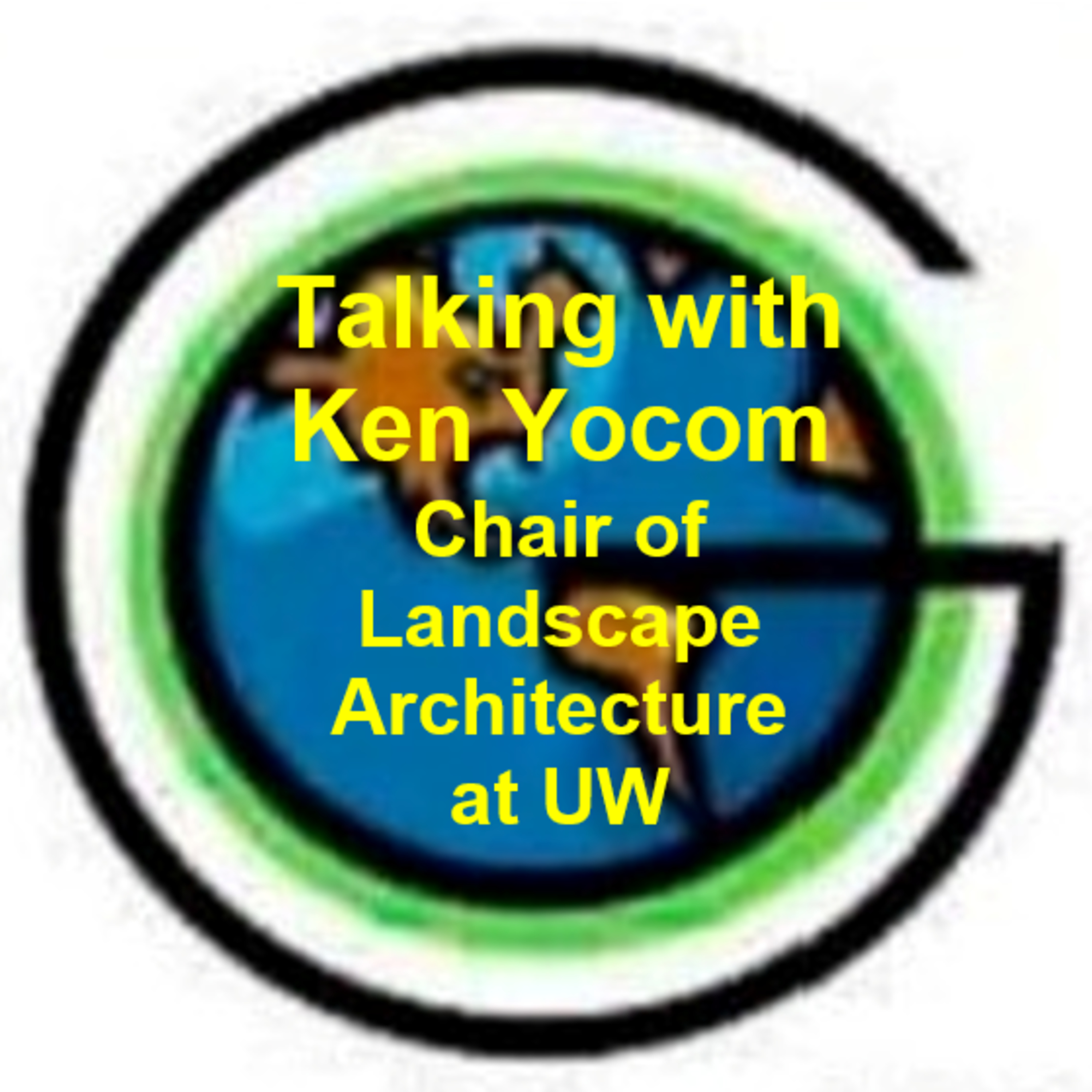Share

The Green Meridian Podcast - A Landscape Design/Build Toolkit
49: All about Mason Bees
On this episode of the Green Meridian podcast, we learn about the busy Mason bee and how these beneficial insects can transform the vibrancy and health in your gardens and landscapes. We discuss how to introduce mason bees to your outdoor area - and how you can purchase, manage and nurture bee populations at your home or landscape project site.
We talk here with Dave Hunter, the founder of Crown Bees. You can learn more at Dave's website: https://crownbees.com/. Mason bees are solitary bees that are native to North America. They are excellent pollinators, and they are very easy to attract to your garden. Mason bees are very different from honey bees. Honey bees are social bees that live in colonies, while mason bees are solitary bees that live on their own. Mason bees are also much smaller than honey bees. They are about the size of a housefly, and they have black bodies with a blue or green sheen. Mason bees are important pollinators. They pollinate a wide variety of plants, including fruits, vegetables, and flowers. Mason bees are also very efficient pollinators. They can pollinate a plant in just a few seconds.
If you are interested in attracting mason bees to your garden, there are a few things you can do.
- First, you need to provide them with a place to nest. You can do this by building a mason bee house. Mason bee houses are very simple to build, and there are many plans available online.
- Second, you need to provide mason bees with food. Mason bees eat pollen and nectar. You can provide them with food by planting a variety of flowers in your garden. Mason bees are especially attracted to blue and purple flowers.
- Finally, you need to provide mason bees with water. You can do this by placing a shallow dish of water in your garden. The dish should be filled with pebbles or marbles so that the bees can land on them.
Mason bees are one of our most important beneficial insects. Excellent pollinators, they are very easy to attract to your garden.
If you are interested in learning more about mason bees, have a listen!.
Also check out these busy bee resources:
https://en.wikipedia.org/wiki/Mason_bee
https://crownbees.com/pages/mason-bee-characteristics-and-identification
More episodes
View all episodes

50. 50: The Seattle Waterfront Park with Andrew tenBrink of Field Operations
55:04On this episode we speak with Andrew tenBrink, the lead landscape architect for the Seattle’s Central Waterfront and Seattle Aquarium Ocean Pavilion.Working with the firm Field Operations, Andrew is responsible for the overall implementation of this incredibly complex and expansive urban renovation, that includes redirecting urban streets, installation of thousands of native plantings and reconstruction of the Seattle seawall, as well as two of the existing waterfront piers and the creation of a new ferry terminal. With an overall massive renovation to the Pike Place Market area and new interactive ecological displays that will allow the viewing of salmon habitat and the reestablishment of kelp forests, the Seattle Waterfront project is an incredible integration of the urban environment with the reestablishment of wildlife habitat and public education about natural ecologies.(See a past episode where we talk to 3 Senior designers with Field Operations)Before leading the design and project management of Seattle’s Central Waterfront and Seattle Aquarium Ocean Pavilion, since 2010, Andrew managed the open space portion of Princeton University’s Lake Campus and the Princeton University Bridge project. His previous work includes the Qianhai’s Guiwan Water Finger Park in Shenzhen, China; Cleveland’s Public Square; and Tongva Park and Ken Genser Square in Santa Monica, CA.Prior to joining Field Operations, Andrew was a designer with EDAW (now part of AECOM), where he worked on various high-profile projects, including Washington D.C.’s Marvin Gaye Park, the National Museum of American History, the Moultrie Courthouse, Woodland Park, and the Potomac Yard Linear Park, as well as New York’s World Trade Center Streetscape. Andrew earned his Master of Landscape Architecture degree with distinction from the Harvard Graduate School of Design and a Bachelor of Science in Landscape Architecture degree with honors from Purdue University. Join us as we speak with Andrew and discuss these unprecedented scope and complexity of The Seattle’s Central Waterfront and Seattle Aquarium Ocean Pavilion projects!Some additional links:https://waterfrontseattle.org/construction/construction-overviewhttps://waterfrontseattle.org/waterfront-projects/alaskan-wayhttps://www.theurbanist.org/2023/09/30/seattle-waterfront-park-makeover-promises-new-greenway-native-plants-and-public-fishing/https://www.seattletimes.com/opinion/editorials/in-waterfront-park-the-seeds-of-a-better-seattle/
48. 48: Green Industry Politics & The 2024 Election
01:05:12The Landscape, Nursery and Construction trades are at a crossroads. But then again, aren't we always? "If you see a fork in the road. take it!" Yogi Berra once said. But the election path that we travel this year may be more momentous than in year's past. Issues centering around the economy, business regulation, immigration and crime are affecting every business. Some say that democracy itself hangs in the balance and others will say that the issue is governmental over-reach. You will likely agree that it is more difficult than ever to have a coherent conversation with "the other side". But what if we could? Let's give it a shot.
47. 47: Field Operations. We talk with 3 senior designers.
41:51Today we speak with three senior designers with the multi-disciplinary Landscape architecture and urban design firm - Field Operations. Field Operations is known for a wide range of large scale municipal and campus projects - including Seattle's new Waterfront project. You can find more info on this and other large scale work here https://www.fieldoperations.net/projects.html We are talking today to three Senior associates: Alejandro Vázquez in New York City A graduate of Univ of Pennsylvania, Fla International Univ. Responsible for project such as The Underline’s 0.5-mile-long Phase 1 in Miami. South Main Innovation District in Houston, Texas, London’s Queen Elizabeth Olympic Park, Miami Beach’s Lincoln Road District, Chicago’s multi-phased Navy Pier. 2021 Forefront Fellow with the Urban Design Forum, exploring how to foster food equity in every New York City neighborhood through the built environment. Alejandro is meticulous and creative thinker who brings unparalleled thought to his craft and a collaborative approach to his projects, resulting in public spaces that are vibrant, distinctive, and highly memorable. Alejandro is also fluent in English, Spanish, and Catalan. We are also joined by Justin Jackson. in Philadelphia. Justin is a graduate from Harvard, and the Univ of Georgia. His work includes the Georgetown Canal Plan in Washington, D.C., Met Park in Arlington, VA, he managed the master plan for the Kennedy Center’s public space in Washington, D.C. ,and also managed the Arlington National Cemetery Southern Expansion project. working at botanical gardens and arboretums throughout the eastern U.S. also a member of ASLA and the American Public Gardens Association. Our third guest is Seth Rodewald - Bates, in San Francisco. Seth is a graduate of LSU and Stephen Austin University. Seth has been working on Pier 70, a 28-acre mixed-use development and waterfront park, and the Presidio Tunnel Tops—both in San Francisco. He also was a landscape architect for Glenstone, a contemporary art museum near Washington, D.C., past intern at the Chinati Foundation in Marfa. Seth has a passion for large-scale site-specific art. He has worked on numerous campus, waterfront, urban, and mixed-use projects throughout the U.S. and abroad, and is adept at both resolving intricate design problems as well as overseeing construction. Seth taught at Stephen F. Austin State University, Boston Architectural College, Louisiana State University, and Tulane University. Seth is licensed in Mississippi and Louisiana.
46. 46: A conversation with UW Land Arc director Ken Yocom
01:09:07Today we have a conversation with landscape architect Ken Yocom about the evolving students of landscape design, how community college programs yield a different kind of student, how academics is changing in the field of Landscape architecture and the conflicts between designers and contractors.Ken is an Associate Professor and the Chair of the Department of Landscape Architecture. He also has an adjunct appointment in the Department of Urban Design and Planning and is core faculty for the PhD in the Built Environments Program and the Interdisciplinary PhD Program in Urban Design and Planning within the College of Built Environments. He primarily teaches seminar and studio courses in theory, ecology, and urban design.
45. 45: Playing the Game of Risk - management
44:54Risk management can take many forms. When we think about it, our thoughts usually go directly to the job site and we think of safety issues. But there are many aspects around this kind of topic. From insurance concerns to contract clauses and safety in the form of training, today we cover a range of facets of risk management. Hosted by my associate Bill Peregrine, he references a graphic that takes the idea of risk management and breaks it into easy to understand parts. We'll cover topics such as: Identifying and assessing risks Developing and implementing risk mitigation strategies Managing and monitoring risks Responding to and recovering from incidents The importance of risk management in the landscaping industry The different types of risks that landscapers face How to create a risk management plan How to communicate risk to clients and employees How to use risk management to improve your landscaping business.We'll also be interviewing some business owners from the landscaping industry, to get their insights on risk management. Whether you're a landscaper, a business owner, or just someone who wants to learn more about risk management, this podcast is for you. So, sit back, relax, and enjoy the show! -
44. 44. Curating Company Culture
52:28It's harder than ever to find talented staff. Forming the personal and professional bonds to nurture and structure an enthusiastic and loyal production team requires a careful attention to a wide variety of details, an innovative plan of action and careful - constant nudging. In this episode, we talk about what landscape design and build companies are doing to keep that most precious resource - talented staff - enthusiastic, loyal and hardworking.
43. 43: Books on Your Shelf
54:50The Green Meridian video meeting and discussion "Books on Your Shelf" was really insightful today. Thanks to all that joined! The books we discuss include: Design with Nature, by Ian McHarg Bringing Nature Home and Nature’s Best Hope. by Douglas Tallamy and Rick Darke A Sand County Almanac, by Aldo Leopold Landscape Architecture, by John Simonds The Death and Life of Great American Cities, by Jane Jacobs Manual of Woody Landscape Plants, by Michael Dirr, Hon. ASLA Exotica Pictorial Cyclopedia. by Alfred Graf Joyful: The Surprising Power of Ordinary Things to Create Extraordinary Happiness by Ingrid Lee The Creative Act. by Rick Rubin Meditations. by Marcus Aurelius Gardens are for People. By Thomas Church Trees for Gardens. by Martin Crawford American Roots Modern Plant Hunters. The Garden Color Book.Home Landscaping Northwest. by Don Marshall Gardening with Nature, by James van Sweden The Education of a Gardener, by Russell Page The Brother Gardeners: A Generation of Gentlemen Naturalists and the Birth of an Obsession,by Andrea Wulf Good to Great: Why Some Companies Make the Leap…And Others Don’t,by Jim Collins Start with Why: How Great Leaders Inspire Everyone to Take Action, by Simon Sinek Project Management for Design Professionals, by William Ramroth Ready, Set, Practice: Elements of Landscape Architecture Professional Practice,by Bruce Sharky, FASLA Getting to Yes: Negotiating Agreement Without Giving In, by Roger Fisher, William L. Ury, and Bruce Patton Getting Things Done: The Art of Stress-Free Productivity, by David Allen Design on the Land, by Norman Newton Landscape Architectural Graphic Standards, by Leonard Hopper, FASLA Site Engineering for Landscape Architects,by Steven Strom, Kurt Nathan, and Jake Woland Time-Saver Standards for Landscape Architecture,by Charles Harris, FASLA, and Nicholas Dines, FASLA
42. 42: Solving for Winter in the Green Industry
39:18What do you do when your company is nearing the turbulent waters at the polar end of the year? You are rounding the back side of the moon, looking at a cooler, quieter time - and this poses a conundrum for designers and contractors. What's your plan? Have you gathered your acorns? Do you have recurring revenue? A late season holiday marketplace? Snow services? Holiday lighting installation? What strategies are you using? Join us for a far ranging conversation about what you can do to gain the momentum to carry yourself into Spring of next year. We are joined by EarthDance Organic's Bill Peregrine and FallingWater Garden's Rick Perry, green industry professionals with years of experience managing staff and revenue through many a cold season.